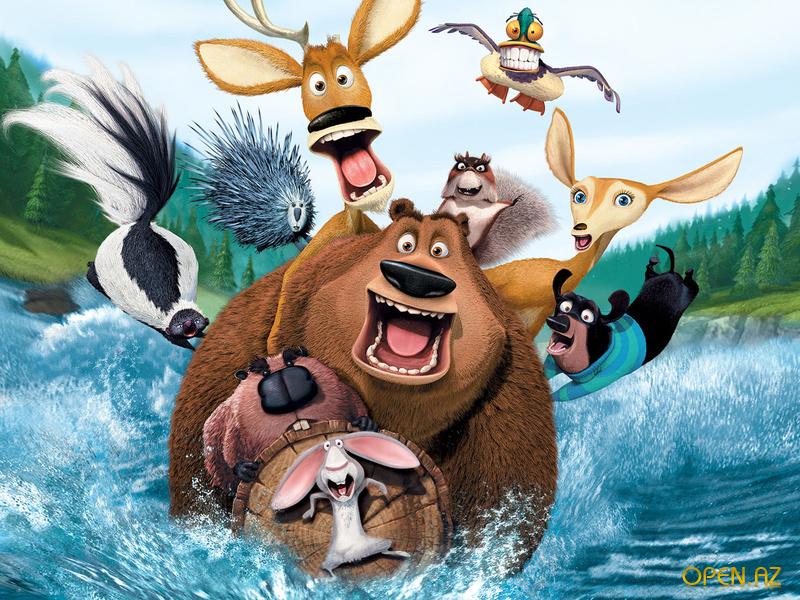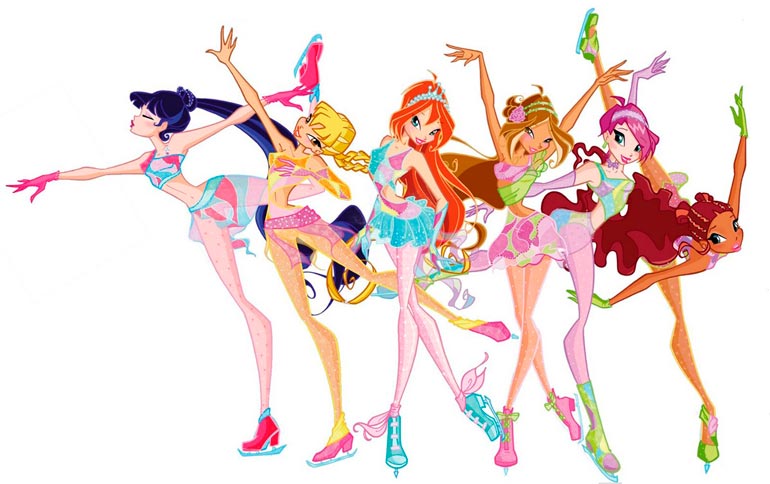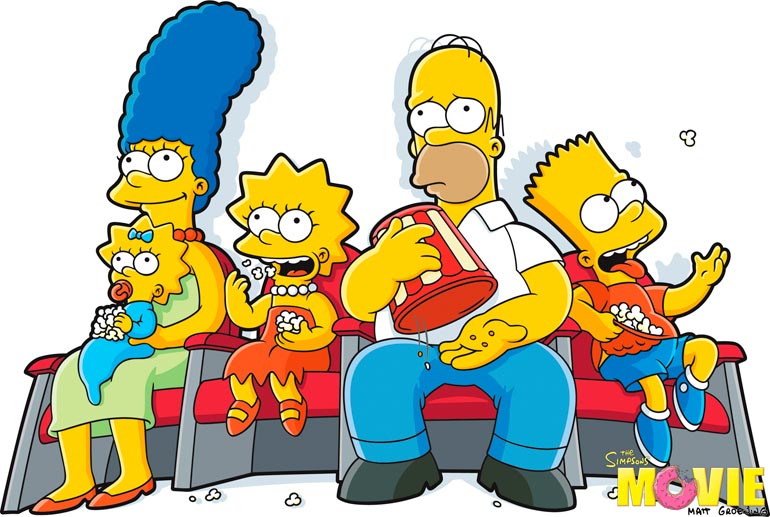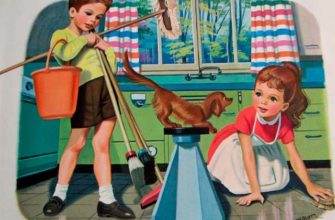Cartoons continue to dominate the life of the modern child. However, more and more often, the meaning and quality of animation do not correspond to the development goals of children and their needs. And especially this concerns the products of the American Dream Factory. Psychologists believe that most foreign cartoons simply can not be shown to children, and the rest can only be watched under strict parental censorship and with mandatory adult comments. Is foreign animation dangerous for children? What are the criteria for harmful cartoons?

Today's education often looks like this: adults are busy with different things, and the baby, in order not to interfere, is seated in front of a TV or computer screen. And this child watches all day and night all in a row, and after a couple of months he literally cannot breathe without the usual dose of colorful cartoons. Is it useful? Psychologists categorically answer: "No!" Let's look at specific examples of popular foreign animated films to see what psychological impact they have on children's consciousness and behavior.
Female images: sexuality and cruelty
Experts argue that in modern animation, female images are deprived of romance by endowing them with excessive realism, cruelty and physiology. At the same time, such feminine qualities as shyness, modesty, and chastity are ridiculed for traditional Russian domestic cartoons.
For example, the animated series “Winx” about witches, which is insanely popular among girls, portrays the main characters with huge eyes, abnormally long legs and very revealing outfits. And if you add an excessively thin waist here, it begins to seem that cartoon girls, with their ambiguous appearance, popularize vulgarity and anorexia. Psychologists are sure: stereotypes of adult behavior, especially eroticism, cannot be shown in children's cartoons!

In the animated film "Shrek", the main character from a beautiful princess turns into a green monster. Yes, and does not behave like a woman: aggressively and even cruelly. And this episode with the murder of an unfortunate bird who swells from singing and then bursts! Have your children laughed at the dead bird? Can you recall at least one main heroine of Russian fairy tales who would do this with forest animals? In addition, Princess Fiona does this very contagiously and cheerfully, as if urging the children to follow her example.
Destruction of family values
Perhaps you can’t find a more popular cartoon than the series about the eccentric yellow Simpsons family. However, many psychologists and parents consider this comedy animated film a propaganda of cruelty, unhealthy family relationships, and even drug addiction. So, in some episodes, subtly and, especially scary, witty laugh at elderly and sick people.For example, a turtle steals the false jaw of old Simpson, and he cannot catch her. And there are a lot of similar stories in the series on which entire generations in the USA and Russia have grown.

After reviewing many Disney cartoons, child psychologists discovered a strange pattern: a beautiful and young heroine in most cases is childless, but for some reason mothers are portrayed as ugly and noisy, with blurry figures. It turns out that after watching such cartoons, small spectators may not have a desire to start a family and give birth to children. So, in the animated film Beauty and the Beast, the main character is shown to be beautiful and carefree, and the eccentric woman with screaming babies somehow causes disgust.
Is everything so bad?
Perhaps American cartoons receive mostly negative comments from psychologists. There is a high aggressiveness of Disney cartoons, the introduction of negative behavioral patterns and sexual identification into children's consciousness. And with evil, the heroes personifying a good start are physically dealt with. In old Soviet animated films, evil characters more often succumbed to persuasion and reeducated.
Of course, in general, Disney cartoons leave a completely different feeling after viewing than Soviet and even modern Russian paintings. Ours, of course, is much more sincere, cleaner and kinder. However, it is not entirely correct to consider all American animated production as a single mass. Compare, for example, the cheeky "South Park" and the touching "Gummy Bears" - to put it mildly, they are not completely similar and affect children in completely different ways. And how beautifully shown is the beauty of motherhood and family relations in such cartoons as “Bambi the Fawn”, “The Lion King” or “101 Dalmatians”.
Signs of harmful cartoons
Each parent can independently determine how harmful one or another cartoon is to his child. The presence of at least one “harmful” sign should serve as the basis for the exclusion of this animated product from children's viewing.
- The main characters of the cartoon behave inappropriately: they kill, steal, cause harm, maim. Even if all this is presented in a humorous manner.
- Such behavior of heroes often goes unpunished or leads to gaining popularity, wealth or is approved by society.
- In the cartoon, the characters show dangerous behavior, which, if repeated by a child in real life, can be harmful to health and life.
- Cartoon characters show non-standard behavior for their gender: female characters behave like a man, and male characters behave like a woman.
- In the picture you can see scenes of neglect of people, as well as animals and plants. For example, a mockery of disability, old age, or social inequality.
- The main characters have a repulsive appearance. For young children, there is often an equal sign between the words “good” and “beautiful”. That is, they need positive heroes to be not only good, but also pretty.
- The picture promotes an idle lifestyle, the characters achieve their goal in an easy way or through deception.
- Authors ridicule or negatively reflect family values.Children constantly conflict with adults, spouses disrespect each other, parents humiliate their child.
Each adult is obliged to select cartoons for his child, focusing primarily on the children's reaction, the plot of the picture and his own feelings. After all, a good parent always knows what his baby is watching and how much time he sits in front of the TV screen. Finally, with a good parent, the child will gladly go play and chat, easily breaking even from the best cartoon in the world.
We also read:
- How do we lose our children
- Educational programs and cartoons for kids: are they always useful?
- The impact of modern gadgets on children (pros and cons) -https://kid.htgetrid.com/en/psihologiya-detey/vliyanie-sovremennyih-gadzhetov-na-detey-plyusyi-i-minusyi.html
- 10 signs of children's addiction to computer games and the Internet: harm from a computer -https://kid.htgetrid.com/en/psihologiya-detey/zavisimost-detey-ot-kompyutera.html
In this short program (TVC - 2003), experienced psychologists examine the impact of modern cartoons on children's minds. A documentary for parents whose children are not indifferent.
[sc: ads]









I absolutely agree that American cartoons destroy the children's psyche. Yes there’s a nursery, they destroy an adult. I will never forget what silence and shock there was in the cinema when a bird exploded in the cartoon “Shrek” from the song of Fiona. It was so unusual to see this and so unpleasant that I made a clear decision for myself: my children will not watch American cartoons as much as I can keep them from doing this. It will turn out up to 20 years, and in general it will be great!
I am of the opinion that even the most instructive cartoon will not replace the child's communication with parents. Therefore, if you do not find time for a child, he does not feel your love and care, then do not be surprised that your baby began to imitate the heroes of his beloved cartoon.
I am also against some foreign cartoons, but, unfortunately, children have become less and less likely to watch our cartoons. My son, for example, has not watched ours for 3 years at all, only wait.
Dull race. Comparing “South Park” and “Gummy Bears” is like comparing “Little Red Riding Hood” and “The Godfather”. A variety of topics and target audiences. I’ll also say about the “Simpsons” and so on. There are cartoons for children, and there are cartoons for adults. By the way, about “The Simpsons”: why did the author never mention that in the notorious cartoon series from the very first series, always, at any twists and turns of the plot, all family members help each other and always support each other? And not in an idealistic-sugar manner, but in a completely realistic one?
Russian cartoons look less because in many respects they are less quantitatively, and worse they are qualitatively in many cases. The word “Wait a minute” (which I myself love and respect) was created as an answer to “Tom and Jerry”. Like Soyuzmultfilm, it was a quick reaction to the success of Disney Studios.
Cartoons should be suitable for age, of course. But the responsibility lies with the parents. And if they know that their child is vulnerable or just small, then why lead him to a cartoon full of caricatures of fabulous cliches and where “birds explode”?
And my little pony is harmful, it seems to me no